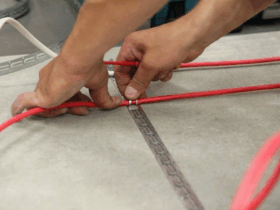Part two on the technical rules of paving garden paths
Garden trails with laying material to Earth when forming paths with a protrusion need the construction of borders, the same paths when laying a flush with a lawn require the creation of an empty road trough. Borders of garden paths can be built both from the main form of the paths themselves, as well as their concrete, asphalt and various solutions, bursting into the temporarily created formwork. The choice of material for creating garden paths also depends on the requirements of garden trails presented for the quality. When forming carriageways from artificial or natural stone, the thickness of the elements should be from six to ten centimeters. The creation of pedestrian paths during the construction of paintings without drainage requires the thickness of their main array of four to six centimeters, and only four centimeters when erecting paths on a solid base. Material for filling the seams of paved paths is also important, for carriageways, as a rule, gravel or river sand is used, and for pedestrian paths humus or sawdust.
Garden paths should have a slope for rainwater drainage, so the standard value for one square meter of tracks of the longitudinal bias should be four, and the transverse two centimeters. The longitudinal slope of the paths allows you to take rainwater a considerable distance, and the transverse to nearby vegetation. Often, when arranging garden paths with a transverse slope on the inclined side of the paths, a groove is installed, which stretches along the length of the entire path and goes beyond the site. Such gutters are closed with a net and do not violate the aesthetics of garden paths, but are quite useful elements, since they prevent the accumulation of puddles on the garden paths.
When all the work is done, you can purchase household appliances home. For example, buy a LCD, LED or plasma TV, as well as with 3D technologies from Samsung, LG, Philips in the Europe-TV store. Bathered pixels are performed.













Оставить ответ